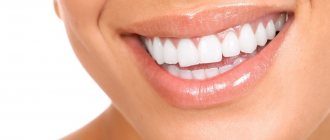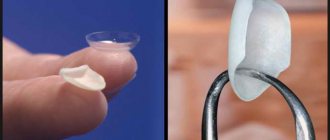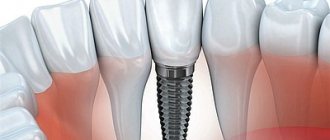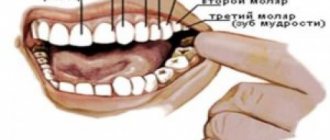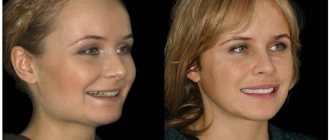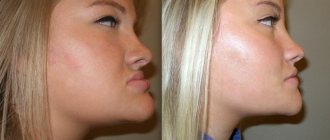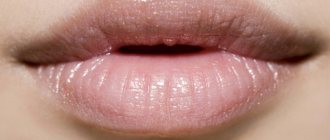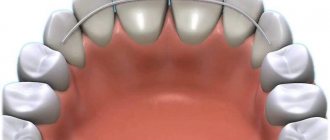Scientists have proven that a smiling person evokes more sympathy than even the most beautiful but gloomy top model. Moreover, employers are more loyal to those with healthy and beautiful teeth. Such people give the impression of being more responsible and efficient. And Dutch researchers claim that with a smile a person always looks younger than his age. How to achieve an ideal smile and what to do if nature has not endowed you with beautiful teeth, says Ilgam Vagifovich Mamedov, leading orthopedist and chief physician of the German Center for Aesthetic Dentistry SDent in Moscow.
Parameters of an ideal smile
It would seem that it could be simpler: white, even teeth, a complete dentition, absence of dental diseases - that’s all you need. But creating an ideal smile in dentistry is a whole science, and the doctor does not act as a doctor, but rather as an artist creating a full-fledged work of art. An ideal smile has certain parameters that modern aesthetic dentistry focuses on.
- Parallelism of horizontal lines
: the eyes, the cut of the mouth, the cutting edges of the front incisors and an imaginary line connecting the cutting edges of the canines.
- Visual reduction in tooth size from the center to the edges
, allowing you to create the illusion of perspective. In this case, the ratio of the width of the anterior incisors, lateral incisors and canines is 1.6:1:0.6, and the width of the anterior incisors relates to their height as 0.7 - 0.8 to one. The front incisors should meet on the projection of the midline of the face, connecting the middle of the bridge of the nose and the center of the chin. In addition, the edges of the upper teeth should follow the curve of the lower lip, and the upper lip should cover the gum line of the teeth, leaving only triangles between the teeth.
- When creating the perfect smile, we also take into account the height of the concave gum line around the necks of the teeth and its level for each group of teeth
, interdental angles, which should increase from the incisors to the molars, the sharpness of the incisor angles, which is more pronounced in men than in women, and many more parameters. For example, the incisal edges of the incisors may protrude a little more to create a more aggressive appearance. This masculine smile is considered ideal for the stronger sex, because it allows you to create the illusion of strength, success, and self-confidence.
Reasons for the development of malocclusion
Abnormal bite can occur under the influence of the following factors that provoke its development:
- In children: thumb sucking and prolonged use of a pacifier.
- Bad habits such as putting things in your mouth and chewing them.
- The first baby teeth do not fall out for a long time.
- Bruxism.
- Wide gaps between the elements of the dentition.
- Large gaps between teeth.
- Complex respiratory diseases.
- Pathological processes in the body that negatively affect bone development.
- Poorly developed diet without solid food.
- Side effects after prosthetics.
- Loss of most of the elements of the dentition.
Many people with malocclusion often wonder: when is orthodontic intervention necessary to correct the situation? The situation can be corrected only after preliminary diagnostics. In some cases, it is needed if there are no obvious defects. Below we will consider cases when such measures cannot be avoided:
- Direct closure of teeth during physiological occlusion, when it causes increased abrasion of tooth enamel.
- With a progenic bite, a short upper lip makes the upper row of teeth too noticeable, spoiling the aesthetics of the smile.
- If a person has too large front teeth of the correct shape with a progenic or biprognathic bite.
- Impaired diction with mesial occlusion, when the lower jaw of a person is underdeveloped, which contributes to the overlap of the upper front teeth with the lower incisors.
- With open pathology, there is no contact between most of the teeth when the jaws close. The anomaly is classified into lateral and frontal. The treatment method for each form is selected by the orthodontist individually for each patient.
- With deep pathology, tooth enamel is quickly erased due to complete overlap of the lower teeth.
- In a crossbite, one of the jaws is partially unformed. The situation is being corrected through comprehensive measures.
You can determine a person’s correct bite using photographs or by contacting a professional orthodontist.
How to get the perfect smile?
The minimum required set for a perfect smile is a toothbrush, toothpaste, floss and visits to the dentist twice a year. Unfortunately, today few people fulfill these requirements, and at a fairly young age people already suffer from diseases of the oral cavity, in which the smile is far from ideal. Even so, dentists use techniques to improve the aesthetics of your smile.
If you are unhappy with your smile, your dentist can help you fix it. First of all, determine what exactly you don't like. Depending on the problem, different treatment methods are used. In some cases, it is enough to do professional oral hygiene; in others, whitening will help.
Whitening tooth enamel
To lighten the enamel, teeth whitening is used after professional cleaning. Removing plaque also slightly brightens the crowns. But, if the enamel has darkened from coffee, tea, or other dyes, it is better to carry out the whitening procedure in a dental clinic. Techniques:
- The chemical method involves exposing the enamel to atomic oxygen. The gums are protected with a special gel to prevent the patient from getting burned.
- Laser technology is safe and more effective. The beam affects each individual crown.
- Ultrasound treatment is a gentle procedure, as the crown heats up minimally.
- Photobleaching uses hydrogen peroxide gel. It is activated by halogen lamps. Oxygen is released from the gel under the influence of light. It breaks down dark pigments.
You can lighten the enamel by several tones. The frequency of procedures is determined by the dentist. Since such manipulations are stressful for teeth, they are followed by remineralizing therapy, which restores the enamel.
The thinnest plates: veneers and lumineers
If, in addition to the color of your teeth, you are not satisfied with their shape, restoration of the front teeth or a veneering procedure will help you.
Dentists have both therapeutic and orthopedic veneers in their arsenal. Therapeutic ones are more affordable, but also less durable: they can change color or chip over time. They are made from a composite material directly on the patient’s teeth and require extensive experience and skill of the doctor. In contrast, orthopedic porcelain veneers are made in a special laboratory and can last a lifetime. Different clinical cases require different degrees of grinding of the teeth, and by installing lumineers on the teeth, you can do without grinding and get a high aesthetic result.
Photos before and after installation of veneers at the SDent clinic by orthopedist I.V. Mamedov
How can digital technology help transform your appearance?
Our clinic actively uses Digital Smile Design technology (“digital smile design” or DSD, read as “digital smile design”) in combination with the principles of Dental Face Lifting (“dental facelift”). Based on the capabilities of digital computer modeling, we restore the ratio of the proportions of the face and teeth according to the “golden ratio” principle using orthopedic and orthodontic structures (for restoring teeth with the help of dentures, as well as correcting the bite, respectively).
We recreate the correct anatomy of the teeth, normalize the chewing load, restore youth to the facial contour and get exactly the smile that suits the patient best.
Every person is unique. Therefore, there are no template solutions. The patient’s personal information is loaded into the Digital Smile Design program - his photographs, computed tomography and intraoral scan data. Based on them, the doctor creates a model of the future smile, taking into account all individual anatomical features. And then the models are transferred to the articulator in order to verify the bite relationships and make adjustments if necessary.
Digitally designed veneers transform your smile and look more natural
All the necessary proportions and measurements are included inside the program. She suggests how best to work out the aesthetics and draws up a step-by-step treatment plan.
Making veneers is a multi-stage and expensive procedure; the cost of an error is quite high. Therefore, it is useful for all participants in the process - the patient, the orthopedic surgeon and the dental laboratory specialists - to have the same information, which cannot be interpreted in their own way. It is this consistency that careful planning of the treatment process can achieve.
The DSD program transmits clear data backed up by 3D images to the laboratory. Everything is taken into account: the shape, shade, height and width of future restorations, their exact positioning and relationship with the gum. Distances are adjusted to fractions of a millimeter, and the color of future veneers is selected on a scale taking into account the color of the patient’s eyes and skin.
This means that the risks of the human factor are eliminated. There will be no errors in color perception or distortions in shape. The laboratory, the orthopedic dentist and, of course, the patient will not differ in their expectations of the result.
Ceramic veneers
natural look requires turning Price: from 25,000 rub. Price: from 25,000 rub.
Zirconium veneers
stronger and thinner turning is required Price: from RUB 25,000. Price: from 25,000 rub.
Ceramic composite
light and durable turning is not always required Price: from 15,000 rubles. Price: from 15,000 rub.
Lumineers
the thinnest veneers do not require turning Price: from 65,000 rubles. Price: from 65,000 rub.
We create beautiful smiles! Veneers and lumineers are non-staining and protect teeth. 3D modeling is included in the price!
Free consultation
A perfect smile means straight teeth
In the case of incorrect bite and teeth position, it is advisable, first of all, to undergo treatment by an orthodontist using braces or a mouth guard to straighten the teeth. Today this can be done at any age. During the treatment process, you can choose a system that suits your aesthetic needs and financial capabilities. For example, metal braces are a classic of orthodontics, and even they have become smaller over time, and therefore less noticeable on the teeth. Among their undoubted advantages are their low price and impenetrable reliability. A huge minus is aesthetics, or rather, the lack thereof. They are contrasted with aesthetic braces: ceramic and transparent sapphire braces. The latter are almost invisible on the teeth. The most aesthetic system for correcting bites in adults today are Invisalign aligners - invisible overlays on the teeth that slowly but surely move them in the right direction.
Sources
- Ferreira AC., Mendes M., Silva C., Cotovio P., Aires I., Navarro D., Caeiro F., Salvador R., Correia B., Cabral G., Nolasco F., Ferreira A. Bone densitometry versus bone histomorphometry in renal transplanted patients: A cross-sectional study. // Transpl Int - 2021 - Vol - NNULL - p.; PMID:33909300
- Cairoli E., Aresta C., Giovanelli L., Eller-Vainicher C., Migliaccio S., Giannini S., Giusti A., Marcocci C., Gonnelli S., Isaia GC., Rossini M., Chiodini I., Di Stefano M., Galmarini V., Passeri G., Di Salvo F., Osella G., Tripodi F., Valenti R., Bonaccorsi G., Giacchetti G., Pugliese F., Casabella A., Seriolo B., Masala AGE., Veronica PP., Maninetti L., De Santis A., Bardoscia A., Parma A., Caso P., Mazza M. Dietary calcium intake in a cohort of individuals evaluated for low bone mineral density: a multicenter Italian study. // Aging Clin Exp Res - 2021 - Vol - NNULL - p.; PMID:33909280
- Qin N., Xu G., Wang Y., Zhan X., Gao Y., Wang Z., Fu S., Shi W., Hou X., Wang C., Li R., Liu Y., Wang J ., Zhao H., Xiao X., Bai Z. Bavachin enhances NLRP3 inflammasome activation induced by ATP or nigericin and causes idiosyncratic hepatotoxicity. // Front Med - 2021 - Vol - NNULL - p.; PMID:33909257
- Licata A., Minissale MG., Giannitrapani L., Montalto FA., Lombardo C., Mirarchi L., Amodeo S., Soresi M., Montalto G. Comorbidities impact and de-prescribing in the elderly with HCV-related liver disease: analysis of a prospective cohort. // Intern Emerg Med - 2021 - Vol - NNULL - p.; PMID:33909256
- Xu J., Xiong H., Zhao Z., Luo M., Ju Y., Yang G., Mei Z. Genistein suppresses allergic contact dermatitis through regulating the MAP2K2/ERK pathway. // Food Funct - 2021 - Vol - NNULL - p.; PMID:33908440
- Huang PY., Chiu SY., Chang KC., Tseng PL., Yen YH., Tsai MC., Wang JH., Kee KM., Chen CH., Hung CH., Chiu KW., Hu TH. A novel evidence of serial changes in bone mineral density in chronic hepatitis B patients treated with entecavir. // Hepatol Int - 2021 - Vol - NNULL - p.; PMID:33907949
- Zeng J., Xiao Q., Li X., Chen J. Advanced oxidation protein products aggravate age-related bone loss by increasing sclerostin expression in osteocytes via ROS-dependent downregulation of Sirt1. // Int J Mol Med - 2021 - Vol47 - N6 - p.; PMID:33907818
- Lee CL., Tzeng HE., Liu WJ., Tsai CH. A cross-sectional analysis of the association between sleep duration and osteoporosis risk in adults using 2005-2010 NHANES. // Sci Rep - 2021 - Vol11 - N1 - p.9090; PMID:33907283
- Yang K., Miao H., Zhao R., Wu X., Liu B., Zheng S., Huang D., Ping Z. Association between serum uric acid and bone mineral density in patients with type 2 diabetes: A 6- year longitudinal study in China. // Medicine (Baltimore) - 2021 - Vol100 - N17 - p.e25733; PMID:33907167
- Sauce D., Pourcher V., Ferry T., Boddaert J., Slama L., Allavena C. Immune activation and chronic inflammation: Is there an additional effect of HIV in a geriatric population? // Medicine (Baltimore) - 2021 - Vol100 - N17 - p.e25678; PMID:33907138
Lip line is an important factor
In addition to teeth, lips also play an important role in a smile. Even with the straightest and whitest teeth, unkempt lips will ruin the whole picture. Lips should be cared for in the same way as facial skin. It is necessary to moisturize and nourish them twice a day, and use a gentle lip scrub once or twice a week. The line and fullness of your lips are highly dependent on your bite, and if you don't like the shape of your lips, chances are you'll need to see an orthodontist to check for any possible malocclusions.
Celebrity Perfect Smiles
Public figures learn to smile the same way they learn to give speeches in public. There are exercises that allow you to develop the facial muscles involved in smiling (and there are more than a dozen of them). Among them are stretching your lips into a tube, exhaling air through it, trying to make a figure eight with this tube, as well as relaxing your lips and trying to stick your tongue out as far as possible. A beautiful smile is practiced in front of a mirror. The corners of the lips should be symmetrical, and only the ten upper teeth should be exposed. When you remember the position of the muscles in front of the mirror, close your eyes and bring the skill to automaticity.
How much does a perfect smile cost?
The cost of a perfect smile depends on the procedures that will need to be completed to achieve the desired result. If we are talking about hygienic cleaning and whitening, then, depending on the technique and level of the clinic, the price ranges from 10,000 to 37,000 rubles for both services. If we talk about the price of lumineers in Moscow, it starts from 35,000 per tooth. Depending on the material used, the cost of ceramic veneers starts from 3,000 to 50,000 rubles or even more. Orthodontic treatment, prosthetics and implantation are procedures that require taking into account many factors on which the price depends.
Publisher: Expert magazine about dentistry Startsmile.ru

